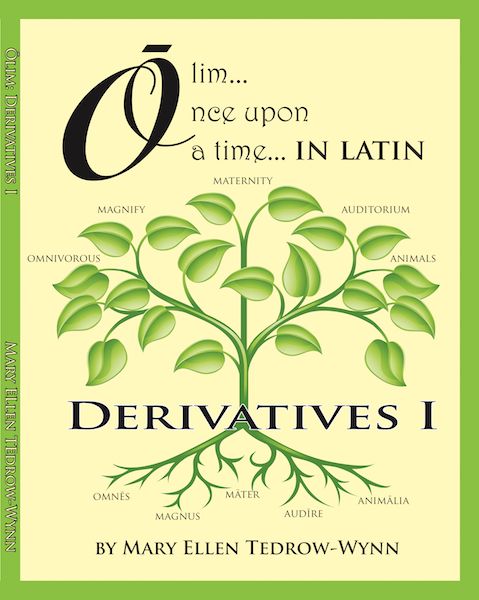My kids are intrigued by foreign languages. We've dabbled in Latin learning a few times in the past, but never found a curriculum that my kids truly understood and loved. Honestly, I was not interested in revisiting our study of the language just yet. I was sure any curriculum would be met with frustrations and complaints after a couple weeks. So when I heard that we had the opportunity to review Picta Dicta Natural World from Roman Roads Media, I had no intentions of actually wanting to try it.
So why am I writing a review of it? Because I watched this video on their YouTube channel and immediately knew this curriculum was different.
Roman Roads Media publishes classical Christian curriculum. By relying on master-teachers of classical education and incorporating video technology, they are able to produce high-quality products that are "accessible, affordable, and flexible for the Christian homeschooler." Their curriculum is characterized by excellent instruction and enhanced with visual aids and examples. Along with multiple Latin choices, they offer many other courses as well, such as logic, rhetoric, poetry, old western culture, and more.
Picta Dicta Natural World is a self-paced Latin program for elementary-age students. It focuses on teaching vocabulary in order to give learners a good foundation of the Latin language. By drilling 400 nouns from the natural world, the program ensures that the learning is both practical and applicable. The words cover the following topics:
Picta Dicta Natural World is a self-paced Latin program for elementary-age students. It focuses on teaching vocabulary in order to give learners a good foundation of the Latin language. By drilling 400 nouns from the natural world, the program ensures that the learning is both practical and applicable. The words cover the following topics:
- Basic Animals
- Fruits, Berries, and Nuts
- Anatomy I
- Land Forms and Terrain
- Small Animals
- Parts of Trees and Plants
- Human Anatomy II
- Water
- Birds I
- Growing Things
- Sky and Weather
- Animal Anatomy
- Sea Life
- Trees
- Hand and Foot
- Constellations
- Exotic Animals
- Flowers and Herbs
- Vegetables and Legumes
- Human Anatomy III
- Birds II
- Insects, Arachnids, and Worms
- Sign and Habitat
- Light and Fire
- Metals and Stones
- Ground Cover and Vegetation
The course is offered at various levels of difficulty and the lessons themselves are self-paced, which means that the curriculum remains both achievable and challenging. In addition to Latin, the curriculum weaves bits of literature, history, and science into the lessons.
The program utilizes a multi-sensory approach with the philosophy of See It, Hear It, Understand It. It combines colorful, hand-drawn images along with audible pronunciations and English definitions and translations to help the student fully grasp the vocabulary.
I have one child working through the course at the Reader I level and two children following the Reader II level. The teaching style is the same for both levels, but the difficulty varies slightly. The Reader I has 8 lessons for each topic followed by 5 lessons of accumulative review, whereas the Reader II generally has 5 lessons followed by another 5 lessons of combined review. I also have plans to work through the Express level myself, which is an accelerated version of the curriculum. There are additional choices for children who cannot yet read and the parent who does not want to complete the drills but wants access to the materials.
The program teaches the words through various means. An example of the Reader II lesson games is as follows:
- Learn Latin -- learn the vocabulary words and read short stories that describe them in their ancient role
- Latin Picture -- use Latin words with English descriptions
- English -- label the picture in English
- Spell Latin -- translate the Latin word and type it in English
- Review Latin -- translate the English word and type it in Latin
There are also two versions of a crossword puzzle for each topic that you can download and print. The easier version lists the Latin word as the clue and the English word as the answer; the more difficult version is the opposite.
My kids have been doing so well with this program! They are loving learning new words and the ease at which they are doing so. Even the 3-year-old is heard walking through the house saying words like "asinus" and "gallina" (and it's super cute, if I do say so myself). I appreciate that they're learning to decode words by recognizing the morphemes in Latin and finding them in English words. In fact, they were impressed when I was able to guess animals by their Latin equivalent in this way. For instance, I guessed horse for equus because of equestrian, dog for canis because of canine, and others. I also knew gallina for chicken because of studying Spanish in high school. Being able to understand English better is one of my favorite reasons for my children learning Latin.
Picta Dicta Natural World is a fantastic program to teach hundreds of words in Latin, no matter your previous experience with the language. With a strong vocabulary foundation, learning grammar and grasping the language as a whole becomes much easier. I am excited to continue with this curriculum and watch my children grow as they learn Latin.
You can connect with Roman Roads Media on the following social media sites:
If you'd like to learn more about the products offered by Roman Roads Media, please read the reviews on the Homeschool Review Crew blog.
















